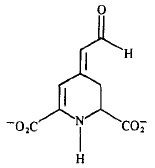The witches hat, Hygrocybe conica (Scop.) P. Kumm., displaying its broad, thick, waxy gills.
Classification
Kingdom Fungi
Phylum Basidiomycota
Class Basidiomycetes
Order Agaricales
Family Tricholomataceae
Genus Hygrocybe
Synonyms
Agaricus conicus Schaeff.
Agaricus tristis Pers.
Hygrocybe chloroides (Malençon) Kovalenko
Hygrocybe cinereifolia Courtec. & Priou, in Courtecuisse
Hygrocybe conica (Scop.) P. Kumm.
Hygrocybe conica f. pseudoconica (J.E. Lange) Arnolds
Hygrocybe conica var. chloroides (Malençon) Bon
Hygrocybe conica var. olivaceonigra (P.D. Orton) Arnolds
Hygrocybe conica var. tristis (Pers.) Heinem.
Hygrocybe nigrescens sensu auct.
Hygrocybe olivaceonigra (P.D. Orton) M.M. Moser
Hygrocybe pseudoconica J.E. Lange
Hygrocybe tristis (Pers.) F.H. Møller [as ‘trista’]
Hygrophorus conicus (Scop.) Fr.
Hygrophorus conicus var. chloroides Malençon
Hygrophorus conicus var. nigrescens sensu auct.
Hygrophorus conicus var. olivaceoniger (P.D. Orton) Arnolds
Hygrophorus nigrescens sensu auct., non Quél.
Hygrophorus olivaceoniger P.D. Orton
Hygrophorus tristis (Pers.) Bres.
Common names
Witch’s hat
Conical waxcap
Conical slimy cap
Blackening waxcap

My name is Austin Collins.
I've dedicated my life to Mushrooms.
I believe Mushrooms are the best kept secret when it comes to health and well being.
For that reason, I would like to share a company with you that in my opinion makes the best mushroom products on the market.
The company is called Noomadic Herbals, my favorite supplement they make is called "Mushroom Total".
I take their products every day and they have helped me think better and have more energy. Give them a try.
-Austin
Description
Cap: 1-5 cm diameter, conical in shape, often lobed, remaining unexpanded and usually with a relatively acute tip and lobed margin, splitting as the cap expands, fleshy, thin, fragile, waxy, bright-scarlet-red, orange-red, or orange-yellow, sometimes tinged with greenish or blackish streaks, viscid, blackening when bruised or with age.
Gills: almost free from the stem, waxy, rather broad, moderately close, yellowish then oliveaceous and finally blackish.
Flesh: no distinctive taste or smell; orange, lighter than the cap, blackening when cut.
Stem: up to 10 cm long and 0.6 cm thick, yellowish to reddish, blackening when bruised, cylindrical, becoming hollow; the surface finely striate.
Spore print: white.
Spores: smooth, ellipsoid, hyaline, non-amyloid, 10-13 x 5-6.5 µm.
Habitat: solitary or in small groups on ground in moist coniferous forest. Occasionally in pastures, meadows, lawns and road-sides.
Season: late summer and fall.
Edibility: probably edible. But see Michael Kuo’s site for a thorough discussion of this topic.
Bioactive compounds
The pigment compound muscaflavin (shown below) has been isolated from fruit bodies of H. conica (von Ardenne et al., 1974).

This compound is thought to be synthesized enzymatically from L-DOPA, an intermediate in dopamine biosynthesis that has also been found in H. conica (3.2% of dry weight) (Steglich and Proess, 1975). See this interesting article for a discussion about muscaflavin, which is also synthesized by Amanita muscaria. Other related pigments found in this species (as well as A. muscaria) include 2,3-secodopa (A below) and 4,5-secodopa (B) (Terradas and Wyler, 1991).


Trace metal analysis
A study of the trace metal content of six wild edible mushrooms common in Korea showed that, in addition to the usual common metals (potassium, iron, zinc, sodium, manganese, copper and calcium in order of concentration from highest to lowest), the zinc content in the witch’s hat was the highest. Other than cadmium, the total contents of inorganic components were the highest in Hygrocybe conica, and decrease in order Hygrophorus russula, Lepista nuda, Lepista sordida, Armillariella mellea and Armillariella tabescens. Additionally, no copper was found in this analysis (Park 1993).
Medicinal properties
Polysaccharides extracted from the mycelial culture of H. conica and administered intraperitoneally into white mice at a dosage of 300 mg/kg inhibited the growth of Sarcoma 180 and Ehrlich solid cancers by 90% and 80%, respectively (Ohtsuka et al., 1973).
Web
Tom Volk’s Fungus of the Month
California Fungi
References
Bougher NL, Young AM.
Hygrophoraceae of Western Australia
Mycotaxon. 1997 63:25-35.
Desjardin DE, Hemmes DE.
Agaricales of the Hawaiian Islands. 4: Hygrophoraceae.
Mycologia. 1997 89(4):615-638.
Ohtsuka S, Ueno S, Yoshikumi C, Hirose F, Ohmura Y, Wada T, Fujii T, Takahashi E.
Polysaccharides having an anticarcinogenic effect and a method of producing them from species of Basidiomycetes.
UK Patent 1331513, 26 September 1973.
Park W-H.
Studies on inorganic components of Korean wild edible mushrooms: Trace mineral elements of Armillariella mellea, Hygrophorous russula, Armillariella tabescens, Lepista nuda and Lepista sordida, Hygrocybe conica.
Korean Journal of Mycology. 1993 21(4):273-8.
Steglich W, Preuss R.
L-3,4-dihydroxyphenylalanine from carpophores of Hygrocybe conica and H. ovina.
Phytochem. 1975 14(4):1119.
Terradas F, Wyler H.
The secodopas, natural pigments in Hygrocybe conica and Amanita muscaria.
Phytochem. 1991 30(10):3251-3.
von Ardenne R, Döpp H, Musso H, Steglich W.
Pilzpigmente, 21. Fliegenpilzfarbstoffe, 5. Über das Vorkommen von Muscaflavin bei Hygrocyben (Agaricales) und seine Dihydroazepin-Struktur.
Z. Naturforsch. 1974 29c:637-9.



